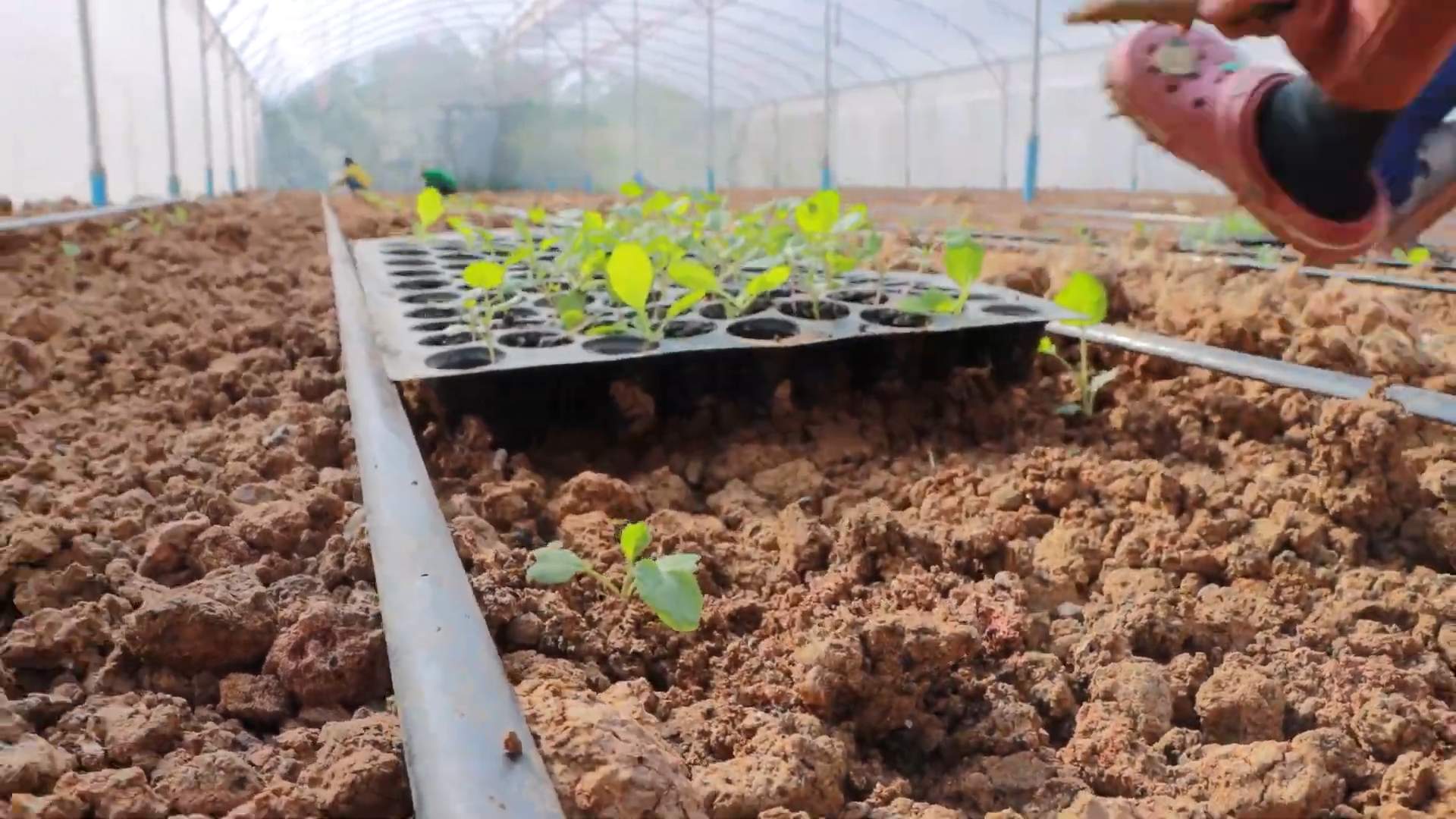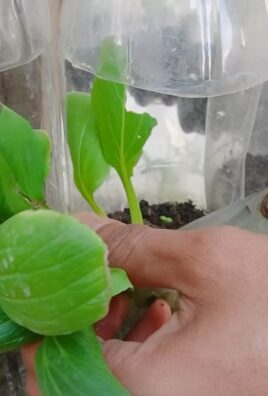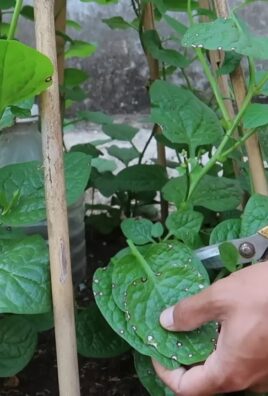Growing Rosemary in Containers: Unlock the secrets to cultivating this fragrant herb right on your patio! Have you ever dreamed of snipping fresh rosemary sprigs to elevate your culinary creations or infuse your home with its invigorating aroma? I know I have! But maybe you’re short on garden space, or perhaps you live in an apartment with just a balcony. Don’t worry, because growing rosemary in containers is not only possible, it’s surprisingly easy and rewarding.
Rosemary, with its needle-like leaves and woody scent, has a rich history dating back to ancient civilizations. The ancient Greeks and Romans revered it for its medicinal properties and symbolic association with remembrance. It was often woven into wreaths and worn during ceremonies. Today, while we may not be warding off evil spirits with rosemary, its culinary and aromatic uses remain incredibly popular.
But why should you bother with this DIY project? Well, for starters, having fresh herbs at your fingertips is a game-changer in the kitchen. Imagine the burst of flavor you can add to roasted chicken, grilled vegetables, or even homemade bread! Plus, growing rosemary in containers allows you to control the growing environment, ensuring your plant thrives even in less-than-ideal conditions. It’s a fantastic way to add a touch of greenery to your living space, enjoy the therapeutic benefits of gardening, and impress your friends with your green thumb. Let’s dive in and discover the simple steps to successfully grow rosemary in containers!

Growing Rosemary in Containers: A Beginner’s Guide
Hey there, fellow plant enthusiasts! I’m so excited to share my experience with growing rosemary in containers. It’s surprisingly easy, even if you don’t have a green thumb (yet!). Rosemary is a fantastic herb to have on hand – it smells amazing, tastes delicious in countless recipes, and even has some potential health benefits. Plus, growing it yourself is incredibly rewarding. Let’s dive in!
Choosing the Right Container and Soil
Before we even think about planting, we need to set the stage for success. This means picking the perfect pot and soil mix.
* Container Size: Rosemary needs room to grow, so don’t skimp on the pot size. I recommend a container that’s at least 12 inches in diameter and 12 inches deep. A larger pot (14-16 inches) is even better, especially if you plan on keeping your rosemary plant for several years. Remember, rosemary can get quite bushy!
* Drainage is Key: This is non-negotiable! Rosemary hates soggy roots. Make sure your container has plenty of drainage holes. If you’re using a pot without adequate drainage, you can drill some extra holes in the bottom.
* Pot Material: Terracotta pots are a great choice because they’re porous and allow the soil to breathe. Plastic pots are also fine, but they tend to retain more moisture, so be extra careful not to overwater.
* Soil Matters: Forget garden soil! It’s too heavy and dense for container gardening. Instead, opt for a well-draining potting mix specifically formulated for containers. I like to amend my potting mix with perlite or vermiculite to improve drainage even further. You can also add a bit of compost for extra nutrients.
Planting Your Rosemary
Alright, now for the fun part! Let’s get that rosemary planted.
1. Gather Your Supplies: You’ll need your chosen container, well-draining potting mix, a rosemary plant (either a starter plant from a nursery or a cutting you’ve rooted), a trowel, and some water.
2. Prepare the Container: If you’re using a new terracotta pot, consider soaking it in water for a few hours beforehand. This helps prevent the pot from drawing moisture away from the soil too quickly.
3. Fill the Container: Fill the container with your potting mix, leaving about an inch or two of space at the top.
4. Create a Planting Hole: Use your trowel to dig a hole in the center of the potting mix that’s large enough to accommodate the root ball of your rosemary plant.
5. Gently Remove the Rosemary Plant: Carefully remove the rosemary plant from its nursery container. Gently loosen the roots with your fingers if they’re tightly packed.
6. Place the Rosemary Plant: Place the rosemary plant in the hole, making sure the top of the root ball is level with the surrounding soil.
7. Fill in the Gaps: Fill in the gaps around the root ball with potting mix, gently pressing down to secure the plant.
8. Water Thoroughly: Water the rosemary plant thoroughly until water drains out of the drainage holes. This helps settle the soil and ensures the roots are properly hydrated.
Caring for Your Rosemary Plant
Now that your rosemary is planted, it’s time to learn how to keep it happy and healthy.
* Sunlight is Essential: Rosemary loves sunshine! Aim for at least 6-8 hours of direct sunlight per day. If you don’t have a sunny spot outdoors, you can grow rosemary indoors under grow lights.
* Watering Wisely: Overwatering is the biggest killer of rosemary plants. Allow the soil to dry out almost completely between waterings. When you do water, water deeply until water drains out of the drainage holes. During the winter months, you’ll need to water even less frequently.
* Fertilizing Sparingly: Rosemary doesn’t need a lot of fertilizer. In fact, too much fertilizer can actually harm it. I recommend fertilizing your rosemary plant once or twice during the growing season (spring and summer) with a balanced liquid fertilizer diluted to half strength.
* Pruning for Bushiness: Pruning is essential for keeping your rosemary plant healthy and bushy. Prune regularly to remove dead or damaged branches and to encourage new growth. You can also prune to shape your plant. Don’t be afraid to prune – rosemary is very forgiving!
* Protecting from Frost: Rosemary is relatively hardy, but it can be damaged by frost. If you live in an area with cold winters, you’ll need to protect your rosemary plant from freezing temperatures. You can bring it indoors, move it to a sheltered location, or cover it with a frost blanket.
Troubleshooting Common Problems
Even with the best care, you might encounter some problems along the way. Here are a few common issues and how to address them:
* Yellowing Leaves: This can be caused by overwatering, underwatering, or nutrient deficiencies. Check the soil moisture and adjust your watering accordingly. If the soil is dry, water deeply. If the soil is soggy, allow it to dry out completely before watering again. If you suspect a nutrient deficiency, fertilize with a balanced liquid fertilizer.
* Brown Leaves: This can be caused by underwatering, sunburn, or frost damage. Make sure you’re watering your rosemary plant adequately, especially during hot weather. If your plant is getting too much direct sunlight, move it to a location with partial shade. If you suspect frost damage, protect your plant from freezing temperatures.
* Powdery Mildew: This is a fungal disease that can affect rosemary plants, especially in humid conditions. To prevent powdery mildew, ensure good air circulation around your plant and avoid overhead watering. If you see signs of powdery mildew, treat your plant with a fungicide.
* Pests: Rosemary is generally pest-resistant, but it can occasionally be attacked by aphids, spider mites, or whiteflies. Inspect your plant regularly for pests and treat them with insecticidal soap or neem oil.
Harvesting Your Rosemary
One of the best parts of growing your own rosemary is being able to harvest it whenever you need it!
* When to Harvest: You can start harvesting rosemary once the plant is established and has grown to a decent size. The best time to harvest is in the morning, after the dew has dried.
* How to Harvest: Use sharp scissors or pruning shears to cut off sprigs of rosemary. Avoid cutting more than one-third of the plant at a time.
* Using Fresh Rosemary: Fresh rosemary is delicious in a variety of dishes, including roasted meats, vegetables, soups, and sauces. You can also use it to make rosemary-infused oil or vinegar.
* Drying Rosemary: To dry rosemary, tie sprigs together and hang them upside down in a cool, dry, well-ventilated place. Once the leaves are dry and brittle, you can remove them from the stems and store them in an airtight container.
Propagating Rosemary from Cuttings
Want more rosemary plants? Propagating from cuttings is a simple and cost-effective way to expand your rosemary collection.
1. Take Cuttings: In the spring or summer, take 4-6 inch cuttings from new growth. Choose stems that are healthy and free from pests or diseases.
2. Prepare the Cuttings: Remove the leaves from the bottom inch or two of each cutting.
3. Rooting Hormone (Optional): Dip the cut ends of the cuttings in rooting hormone to encourage root development. This step is optional, but it can increase your success rate.
4. Plant the Cuttings: Plant the cuttings in a well-draining potting mix. You can use small pots or a seed starting tray.
5. Water and Cover: Water the cuttings gently and cover them with a plastic bag or humidity dome to create a humid environment.
6. Provide Light and Warmth: Place the cuttings in a warm, bright location, but avoid direct sunlight.
7. Wait for Roots to Develop: It will take several weeks for roots to develop. Check the cuttings regularly for moisture and water as needed.
8. Transplant: Once the cuttings have developed a good root system, you can transplant them into larger pots.
Overwintering Rosemary
If you live in a climate with cold winters, you’ll need to take steps to overwinter your rosemary plant.
* Bring Indoors: The easiest way to overwinter rosemary is to bring it indoors. Place it in a sunny location, such as a south-facing window.
* Reduce Watering: During the winter months, rosemary needs less water. Allow the soil to dry out almost completely between waterings.
* Provide Humidity: Indoor air can be very dry during the winter, which can be harmful to rosemary plants. Increase humidity by placing a humidifier near your plant or by setting the pot on a tray filled with pebbles and water.
* Watch for Pests:

Conclusion
So, there you have it! Growing rosemary in containers isn’t just a gardening trend; it’s a gateway to fresh, aromatic herbs right at your fingertips. We’ve walked through the simple steps, from selecting the perfect container and soil to providing the right amount of sunlight and water. But why is this DIY trick a must-try?
First and foremost, it’s about accessibility. Whether you have a sprawling garden or a tiny apartment balcony, container gardening makes growing rosemary possible for everyone. Imagine stepping outside and snipping off a sprig of fresh rosemary to infuse your olive oil, season your roasted chicken, or add a fragrant touch to your cocktails. The convenience is unparalleled.
Secondly, growing your own rosemary allows you to control the quality and source of your herbs. No more wondering how long that dried rosemary has been sitting on the grocery store shelf or what pesticides might have been used. You’ll have fresh, organic rosemary that you can trust.
Thirdly, it’s incredibly rewarding. There’s something deeply satisfying about nurturing a plant from a small seedling or cutting to a thriving, fragrant bush. It’s a connection to nature that can be incredibly therapeutic and fulfilling.
But the beauty of growing rosemary in containers lies in its versatility. Feel free to experiment with different varieties of rosemary. ‘Blue Boy’ offers a compact growth habit, perfect for smaller spaces, while ‘Tuscan Blue’ boasts upright growth and vibrant blue flowers. You can also try different container materials, from terracotta pots to repurposed buckets, as long as they provide adequate drainage.
Consider companion planting your rosemary with other herbs like thyme or lavender, which share similar growing requirements and can create a beautiful and fragrant container garden. You can also add some colorful annuals like petunias or pansies to add visual appeal.
Don’t be afraid to get creative with your container design. Use different sizes and shapes of containers to create a tiered effect, or paint your pots to match your outdoor décor. The possibilities are endless!
We wholeheartedly encourage you to give this DIY trick a try. It’s a simple, affordable, and rewarding way to bring the fresh, aromatic flavor of rosemary into your life. And once you’ve experienced the joy of harvesting your own homegrown herbs, you’ll never want to go back to store-bought again.
So, grab a container, some well-draining soil, and a rosemary plant, and get started today! We’re confident that you’ll be amazed at how easy and rewarding it is to grow your own rosemary in containers.
And most importantly, we want to hear about your experience! Share your photos, tips, and questions in the comments below. Let’s create a community of rosemary enthusiasts and learn from each other’s successes and challenges. Happy growing!
Frequently Asked Questions (FAQ)
What is the best type of container for growing rosemary?
The best type of container for growing rosemary is one that is made of terracotta or a similar porous material. These materials allow for good drainage and airflow, which are essential for rosemary’s health. The container should also be large enough to accommodate the rosemary plant’s root system, typically at least 12 inches in diameter and depth. Ensure the container has drainage holes to prevent waterlogging. Plastic containers can also be used, but be mindful of overwatering.
What kind of soil should I use for rosemary in containers?
Rosemary thrives in well-draining soil. A mix of potting soil, perlite, and sand is ideal. Avoid using heavy clay soil, as it can retain too much moisture and lead to root rot. A good ratio is 2 parts potting soil, 1 part perlite, and 1 part sand. You can also purchase a pre-made herb potting mix, which is specifically formulated for herbs like rosemary. The key is to ensure the soil is light and airy, allowing for proper drainage.
How much sunlight does rosemary need when grown in a container?
Rosemary needs at least 6-8 hours of direct sunlight per day to thrive. Place your container in a sunny location, such as a south-facing window or a sunny patio. If you live in a region with intense summer heat, provide some afternoon shade to prevent the plant from scorching. If you don’t have enough natural sunlight, you can supplement with a grow light.
How often should I water my container-grown rosemary?
Water your rosemary plant when the top inch of soil feels dry to the touch. Avoid overwatering, as this can lead to root rot. Rosemary prefers to be slightly dry rather than constantly wet. During the hot summer months, you may need to water more frequently. In the winter, reduce watering as the plant’s growth slows down. Always check the soil moisture before watering.
How do I fertilize my rosemary plant in a container?
Fertilize your rosemary plant sparingly, as too much fertilizer can lead to leggy growth and reduced flavor. Use a balanced, water-soluble fertilizer diluted to half strength. Fertilize every 2-3 months during the growing season (spring and summer). Avoid fertilizing in the winter when the plant is dormant. Organic options like compost tea or fish emulsion can also be used.
How do I prune my rosemary plant in a container?
Pruning is essential for maintaining the shape and health of your rosemary plant. Prune regularly to encourage bushier growth and prevent the plant from becoming leggy. Trim the tips of the branches after flowering. You can also remove any dead or damaged branches. Avoid pruning more than one-third of the plant at a time. The best time to prune is in the spring after the last frost.
Can I move my container-grown rosemary indoors for the winter?
Yes, you can move your container-grown rosemary indoors for the winter if you live in a region with cold winters. Before bringing the plant indoors, inspect it for pests and diseases. Place the plant in a sunny location, such as a south-facing window. Reduce watering and fertilizing during the winter months. Provide adequate ventilation to prevent fungal diseases.
What are some common pests and diseases that affect rosemary?
Rosemary is generally pest-resistant, but it can be susceptible to spider mites, aphids, and whiteflies. Inspect your plant regularly for signs of infestation. Treat infestations with insecticidal soap or neem oil. Root rot is a common disease that affects rosemary, especially when overwatered. Prevent root rot by using well-draining soil and avoiding overwatering. Good air circulation can also help prevent fungal diseases.
How do I propagate rosemary from cuttings?
Propagating rosemary from cuttings is a simple and effective way to create new plants. Take 4-6 inch cuttings from new growth in the spring or summer. Remove the lower leaves and dip the cut end in rooting hormone. Plant the cuttings in a well-draining potting mix. Keep the soil moist but not soggy. Place the cuttings in a warm, bright location. Roots should develop in 4-6 weeks.
Can I eat the flowers of my rosemary plant?
Yes, the flowers of rosemary are edible and have a milder flavor than the leaves. They can be used as a garnish or added to salads and other dishes. The flowers are also a beautiful addition to any dish. Make sure the plant has not been treated with any pesticides or chemicals before consuming the flowers.




Leave a Comment